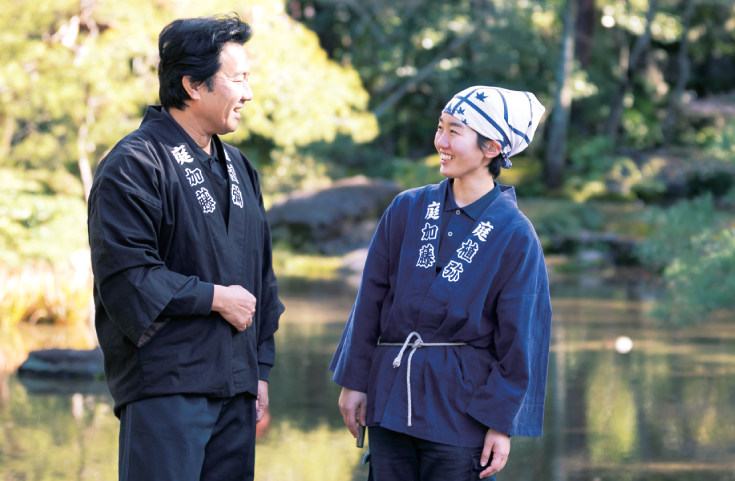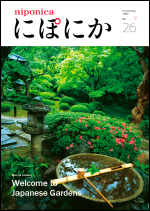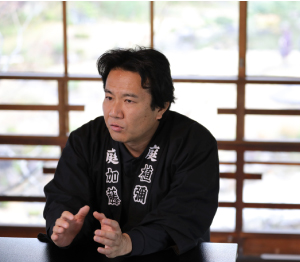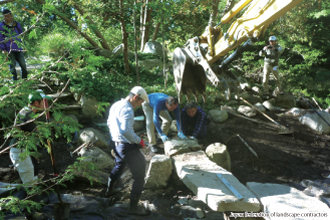niponica is a web magazine that introduces modern Japan to people all over the world.
2019 NO.26
Welcome to Japanese Gardens

Creators of Japanese Gardens
Appreciating and harmonizing feelings,
Japanese gardens are Japan itself
Kato Tomoki, Representative President, UEYAKATO LANDSCAPE Co., LTD.
“Murin-an” in Kyoto, a representative garden created in the Meiji period (late 19th through early 20th centuries). UEYAKATO LANDSCAPE Co., LTD. has been managing the garden as designated administrator. Kato Tomoki grew up watching his father enjoying his job as a gardener and was attracted by Japanese gardens. Now heading the company as its eighth president, he feels that he has a responsibility to maintain the tradition.
The workflow of creating gardens starts with research into the climate and natural features of the region and proceeds through planning, designing and executing. For existing gardens or upon completion, gardeners grow and manage the plantings. Plants require year-round maintenance and comprehensive judgment is needed for such gardening considerations as determining how to match plants to the atmosphere of a particular garden.

Mr. Kato believes that one gardener can only do so much, and he places emphasis on training personnel. The attitude of focusing on cooperating and sharing information with other gardeners has also been passed on to Handa.
Kato also provides technical guidance and training to the gardeners at the Japanese garden in Washington Park in Portland, Oregon, U.S.A. “The underlying principle in creating Japanese gardens is to use local trees and plants . While utilizing local plants that best suit the region’s weather and natural features, we seek to reflect Japanese tradition, which focuses on harmony with nature,” he says of creating Japanese gardens in locations outside of Japan. He works with local personnel and provides guidance on plant cultivation and management. He also has them experience Japanese culture, including the tea ceremony, and learn to appreciate understated natural beauty so that they can develop the mindset needed to create Japanese gardens.
“Japanese gardens are nurtured for hundreds of years by taking up the legacy of generations of clients’ and gardeners’ thoughts and sentiments. However, new owners may reconstruct gardens in other countries. Also, in Japan, we have a custom of cooperating with neighbors so that their views are not obstructed. But, this must be unique to Japan.” He believes that the concept of Japanese gardens, consisting of continuous time and space, may be learned by placing oneself in and experiencing natural surroundings.
“When I’m training young gardeners, I want to keep in mind how to balance degeneration and evolution, in addition to how to grow and manage Japanese gardens.” Kato is thinking flexibly and positively about the future of Japanese gardens.
Japanese garden overseas restoration project
Currently, it is believed, there are more than 500 Japanese gardens outside of Japan. However, it is difficult to maintain and manage them, and some gardens require restoration and repairs. In 2017, the Japanese government initiated a restoration project for those gardens. Japanese garden specialists are dispatched to carry out restoration programs and manuals are provided so that local specialists can easily understand how to maintain and manage the gardens.






